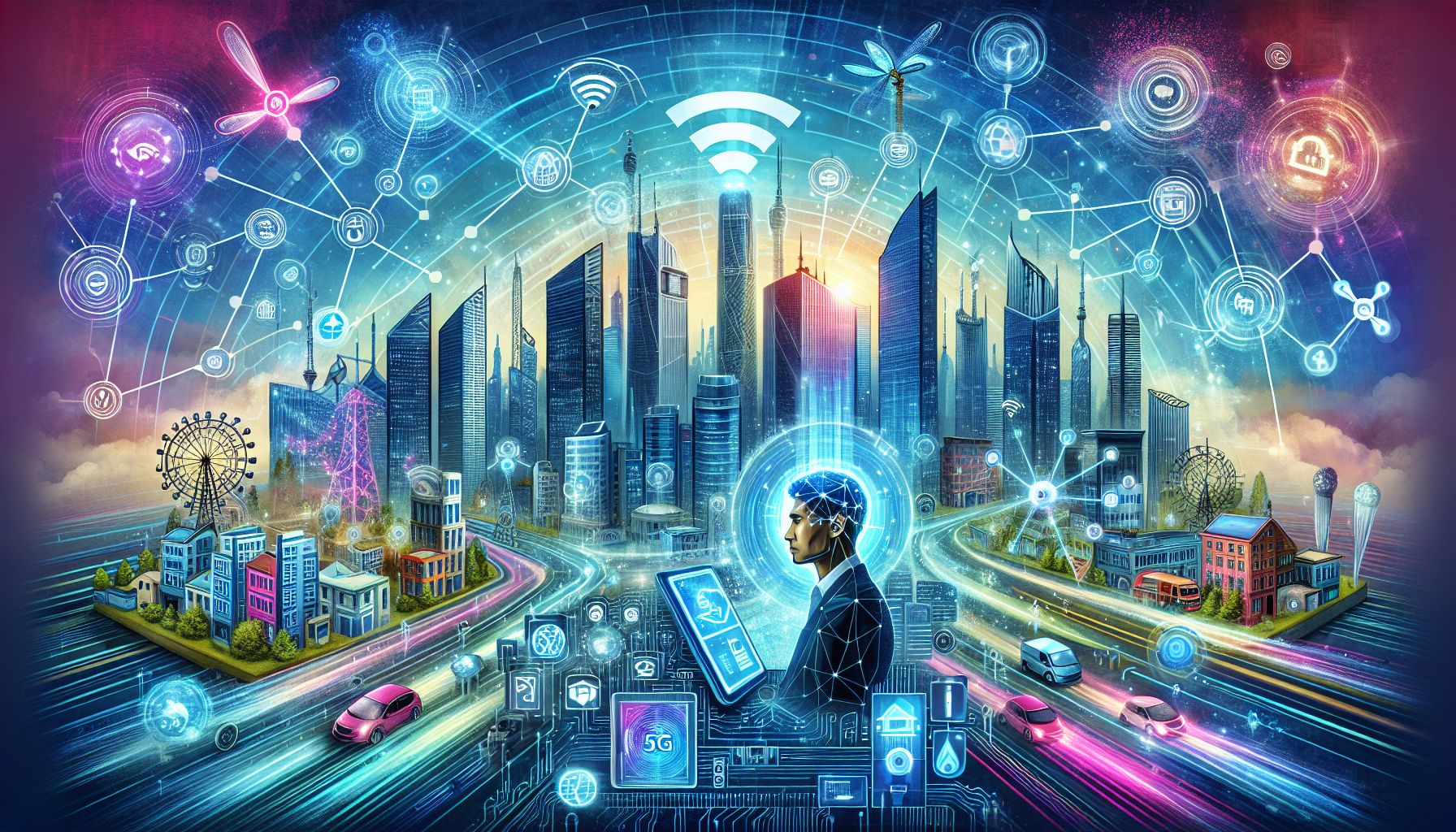📌 Let’s explore the topic in depth and see what insights we can uncover.
⚡ “Imagine a world where your morning coffee is ready before you even wake up, traffic lights anticipate your arrival, and buildings self-regulate their temperature. Welcome to the future of smart cities powered by 5G!”
Hello tech enthusiasts! Today we’re diving into one of the most exciting, revolutionary technologies that’s shaping our world: 5G. But we’re not just talking about faster download speeds on your smartphone. We’re exploring how this game-changing network is becoming the backbone of smart cities. Imagine a world where traffic lights 🚦 adjust in real time to manage congestion, where waste management systems notify city councils when they’re full, where emergency services automatically reroute based on live updates of incidents and traffic. 🔍 Interestingly, the world of smart cities, powered by 5G.
🌐 Understanding 5G and Its Significance

"5G Network: Pulsating Veins of Future Cities"
Before we delve into how 5G is transforming our cities, let’s take a moment to understand what it is. 5G, or fifth generation, is the latest advancement in wireless technology. It’s not just about faster speeds (although it’s certainly part of it), but also about higher capacity and lower latency. Here’s why it’s so significant: * Speed: 5G is expected to be up to 100 times faster than 4G. Imagine downloading a full-length HD movie in seconds rather than minutes. * Capacity: More devices can be connected to the network without slowing it down. 🔍 Interestingly, crucial for the Internet of Things (IoT), where billions of devices need to communicate with each other. * Low Latency: 🔍 Interestingly, the time it takes for a signal to travel from the source to the receiver. With 5G, latency is almost zero, which means real-time communication is possible.
🏙️ The Emergence of Smart Cities
Now that we have a grasp on 5G, let’s explore how this technology is the driving force behind smart cities. A smart city uses digital technology and IoT to enhance the quality and performance of urban services, to reduce costs and resource consumption, and to engage more effectively with its citizens.
Here are some ways 5G is enabling the development of smart cities:
- Smart Traffic Management 🚦: With real-time data and analytics, traffic lights and signals can be adjusted dynamically to reduce congestion and improve traffic flow.
- Smart Waste Management 🗑️: Sensors in waste bins can notify city councils when they’re nearing full capacity, enabling more efficient waste collection and scheduling.
- Emergency Services 👮♂️: Real-time data can help emergency services to respond more effectively. For instance, they can reroute based on live updates of incidents and traffic.
5G and the Future of Smart Cities
The potential of 5G in smart cities goes beyond just improving existing services. It opens up a whole new world of possibilities. Here are some of the exciting prospects on the horizon: * Autonomous Vehicles 🚗: With its ultra-low latency, 5G could make self-driving cars a reality. These vehicles would communicate with each other and with traffic management systems in real-time to optimize routes and avoid collisions. * Smart Grids ⚡: Energy systems could become more efficient and sustainable. For example, smart grids could balance supply and demand, reducing energy waste. * Telemedicine 👨⚕️: High-speed, real-time communication could make remote healthcare more feasible. This includes remote monitoring of patients and even remote surgeries.
Tips to Embrace the 5G Revolution in Your City
As we move towards this 5G-enabled future, here are some tips for city leaders and residents to embrace the 5G revolution: * Educate and Engage: It’s important for city leaders to educate residents about the benefits of 5G and smart city initiatives. This can help gain public support. * Invest in Infrastructure: 5G requires significant infrastructure upgrades. This includes installing new antennas and fiber optic cables. * Collaborate: Collaboration between city councils, tech companies, and community groups can help ensure that smart city initiatives are successful and meet the needs of all residents.
🧭 Conclusion
The integration of 5G technology into our urban landscapes is not just an upgrade; it’s a transformation. It’s the backbone that’s making our cities smarter, more efficient, and more responsive. The vision of smart cities is becoming a reality, and 5G is at the heart of this revolution. As we look to the future, the possibilities are limitless. From autonomous vehicles to smart grids to telemedicine, 5G is paving the way for a future that’s more connected, more sustainable, and more exciting than we could have ever imagined. So buckle up, because the 5G revolution is here, and it’s changing everything.
⚙️ Join us again as we explore the ever-evolving tech landscape.
